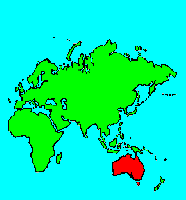SPECIES INFO
Northern yellow faced turtle (Emydura tanybaraga) is found in both extreme northern Northern Territory and extreme northern Queensland both provinces in Australia.This turtle can have a top shell length of about 11 inches or slightly more. The carapace color is pale brown. This species can show yellow stripes along the head and neck.Emydura genus of turtles is found in Australia and New Guinea (Ernst and Barbour) with 6 species known from Australia. Ernst and Barbour discuss five species, but Wilson and Swan discuss 6 Australian species. The head and neck length is more typical to turtles found around the world than to other members of this family found in Australia.
Snake neck and side neck Turtles (Chelidae) are found throughout Africa, South America, and even Australia. Ernst and Barbour in their 1989 book on world turtles spell this family name as "Chelidae". Wilson and Swan in their 2003 book on Australiain reptiles spell this family name as "Cheluidae"
Turtle and Tortoise group (Order Chelonia) are among the most primitive reptiles. They are egg-laying creatures characterized by having four legs, a tail, and two shells each made up of many scales that are joined together. There are about two hundred and fifty species of turtles in the world. Carl Ernst and Roger Barbour published a book entitled "Turtles of the World" by the Smithsonian Press in l989. This work covers all of the known species. The authors note that there are two hundred and fifty-seven species of living turtles. Many of these species are pictured and discussed here.
The following overview of the various families included in the Turtle Order is based on the aforementioned publication:
SCIENTIFIC NAME - COMMON NAME - NUMBER OF SPECIES
Pelomedusidae - Side Necked - 23 species
Chelidae - Side Necked - 36 species
Kinosternidae - Mud and Musk - 22 species
Dermatemydidae - River Turtle - 1 species
Carettochelyidae - Pig Nose - 1 species
Trionychidae - Soft Shelled - 22 species
Dermochelyidae - Leatherback - 1 species
Cheloniidae - Sea Turtles - 6 species
Chelydridae - Snapping turtles - 2 species
Platysternidae - Big Headed - 1 species
Emydidae - Pond and Box - 91 species
Testudinidae - Tortoises - 50 species
256 total species
While the above counts are currently reliable, they will be impacted by findings as research continues. For example, the exact count of the species of tortoises in the Galapagos and placement of the Florida Snapping Turtle might change these counts.
Reptiles (Class Reptilia) are an ancient group of scaled chordates. These scales may be permanently joined, as in the turtles, or flexible, as in the snakes. Reptiles are land-based. Their eggs are laid on land and the young are air breathing.
In the Great Big Book of Snakes and Reptiles published in 2014, they noted that there are more than 7,000 species of reptiles alive today.
Backboned Animals (Phylum Chordata) are the most advanced group of animals on earth. These animals are characterized by having a spinal cord or backbone. Most members have a clearly defined brain that controls the organism through a spinal cord. Fish, amphibians, reptiles, birds, and mammals are in this phylum.
Currently, some taxonomists believe that the fish should be divided into two groups (sharks and regular fishes) and that there are some other primitive groups in the phylum such as hagfish or lampreys.
Animal Kingdom contains numerous organisms that feed on other animals or plants. Included in the animal kingdom are the lower marine invertebrates such as sponges and corals, the jointed legged animals such as insects and spiders, and the backboned animals such as fish, amphibians, reptiles, birds, and mammals.

